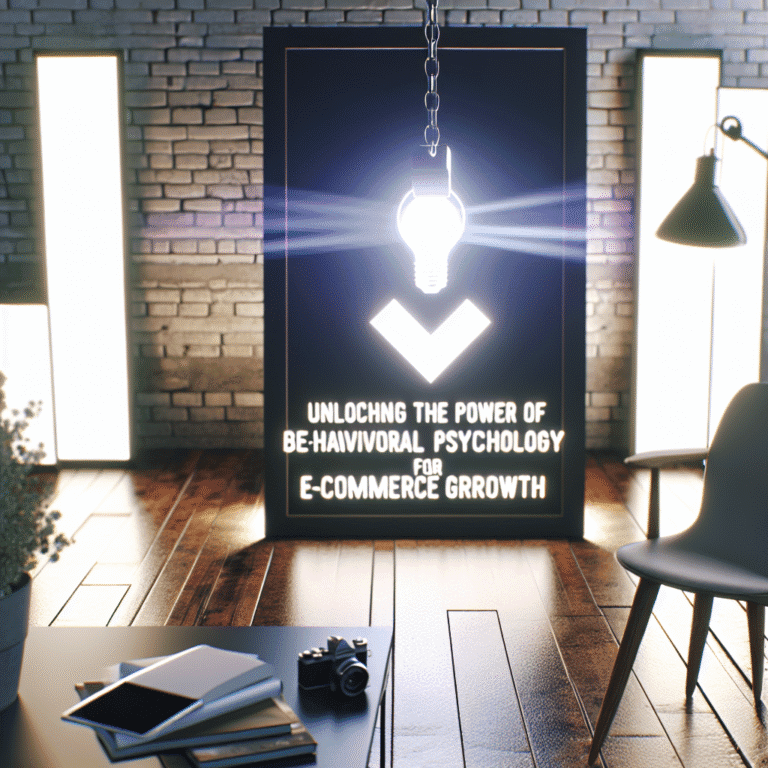Are Your Shoppers Just Window Shopping?
You’ve got money going into Facebook ads, a Shopify store you’ve polished to perfection, and spent hours debating over the right font. Yet those conversions? Still staying put. It's like throwing a party and watching people admire the décor but politely decline to dance.
What’s happening here?
Traditional e-commerce marketing trots out the idea that shopping is a simple “see, click, buy” affair. But anyone who's shopped online knows that's rarely the case. Real shoppers browse, pause, disappear mid-checkout, and come back days later like they’re browsing in a rambling bookshop.
But here’s a nugget of goodness: those random swipes and scrolls? That’s behavioural data — and it’s pure gold when you're savvy about it.
Behaviour-based marketing doesn’t play guessing games. Instead, it notices what shoppers are up to and responds with just the right little nudge when it’s needed.
Let’s explore what a few smart cookies in e-commerce are doing to turn curiosity into a cartload without spooking the customers.
What Behaviour-Based Marketing means for E-Commerce
No faff involved. Behaviour-based marketing isn’t about fancy software or buzzwordy AI. It’s all about using the actions customers really take — the clicks, pauses, and scrolls they actually make — to send timely, thoughtful interactions.
Why’s this important?
- It helps when customers have micro-meltdowns
- It reaches them when they’re most open to suggestions
- It prevents marketers from spraying the same spiel to everyone
This isn’t about hounding. It’s about gently guiding.
Think of it as the friendly shop assistant who appears at the precise moment you need them, rather than one that hovers like a hawk at the entrance.
Key actions showing shopping intent — or hiccups:
- Visiting a product page three times over two days
- Slowly navigating through FAQs and reviews
- Abandoning a cart with four cheap items inside
- Camping in the return policy section
- Viewing a product but never adding it
These aren’t merely data points. Notice them and you can boost those conversion rates with well-timed, personal responses.
Instead of reacting to customers, you’re crafting their future actions, one small nudge at a time.
What Smart E-Commerce Brands Do
Winning at e-commerce isn’t about screaming CTAs or overly bright buttons. It’s understanding the subtleties of behaviour and responding intelligently and simply.
A few examples:
A homeware brand sees customers buying just one plate from a new set. A couple of days later, they send an email saying, “Complete your set?” Simple, timely, and sales go up.
A skincare brand notes just how far customers scroll down the ingredients. Pause? In comes a pop-up with where they're sourced from. Conversions up by 23%.
A pet supply site changes its homepage based on your cart history. Cat owners see feline friends; dog lovers get tails wagging. It’s not just cute — it boosts engagement, reducing bounce rates.
These brands know: It’s about precision, not pressure.
They act like thoughtful humans, sidestepping the trap of mass marketing.
10 Behavioural Triggers That Boost Sales
These aren’t “growth hacks.” They’re essential for building trust in e-commerce. Use them with care.
1. Exit-Intent Smart Popups
- For carts over £100, offer flexible payment options
- For carts under £10, show social proof like “126 people bought this today”
- Don’t punish those who pause. Understand them, and give them a hand.
2. Viewed-But-Not-Added Emails
Visited the same product twice but no add-to-cart? Send a gentle nudge: “Still curious?” Include FAQs, review snippets, and sizing details instead of throwing a 10% off coupon their way.
3. Timed Urgency Alerts
Don’t shout “Almost gone!” at first sight. Wait for repeated visits before adding a sensible dash of urgency. Credibility takes time, and trust leads to sales.
4. Scroll-Triggered Education
If they’re scrolling through tech specs or warranty FAQs, pop in with support content: “Need help comparing?” Fast reassurance beats buyer jitters.
5. Smart Replenishment Emails
Know the customer orders dog food every 20 days? Send a nudge on day 19 with a one-click reorder suggesting their last purchase.
6. Behaviour-Based Re-Engagement
“Generic ‘We miss you’ emails miss the boat. If reviews were last browsed, show new ones. Left mid-checkout? Sort out those hurdles.
7. Predictive Post-Purchase Upsells
Bought a tent, hovered over storm pegs? Follow up with: “Rain’s on the way? Grab those storm pegs you considered.” Anticipation trumps interruption.
8. Cart Abandonment Sequencing
Tailor cart recovery emails by their value. For small carts, use playful nudges. For higher ones, offer trust-building content — guarantees, or a personal note from the founder.
9. Multi-Channel Return Visitors
From Instagram, paid search, and email to the same collection three times? Highlight top products with strong visuals and brief summaries.
10. Adaptive Homepages by Session Depth
First-timer? Start with a story and bestsellers. Been browsing but not buying five times? Give them reassurance — reviews, explainers, guarantees.
All ten tips here aim to increase sales without tricks. They suit the moment perfectly.
Good Behavioural Marketing Isn’t Creepy — It’s Considerate
Worried it might feel overbearing? Remember how nice it is when your barista knows your order without you having to say a word?
That's your sweet spot: thoughtful, not clinging.
People aren’t annoyed by personalisation. It’s lazy attempts they loathe. Behaviour-based marketing works because it's about attention. It's not about spying — it's about being relevant. Used sensibly, it boosts sales whilst actually making the buying journey better.
And remember, tone is crucial too: it should feel like a gentle reminder, not a command.
Be helpful, not haunting.
To Wrap Up
The e-commerce stars of 2024 aren’t bombarding inboxes with more emails or crafting ever-grander landing pages.
They’re simply more observant.
They’re less interested in whether their buyers “love oat milk and farmer’s markets” and more focused on genuine behavioural intent.
Want to improve your conversions, keep customers, and get better ROAS? You don’t need to tear your whole funnel down.
Just start noticing more — and respond smarter.
When your messages strike customers as just pure common sense rather than a marketing barrage, they’re sold. And then they buy again.
Let’s stop the guessing games.
Start paying more attention.
Behavioural insight wins every time.





